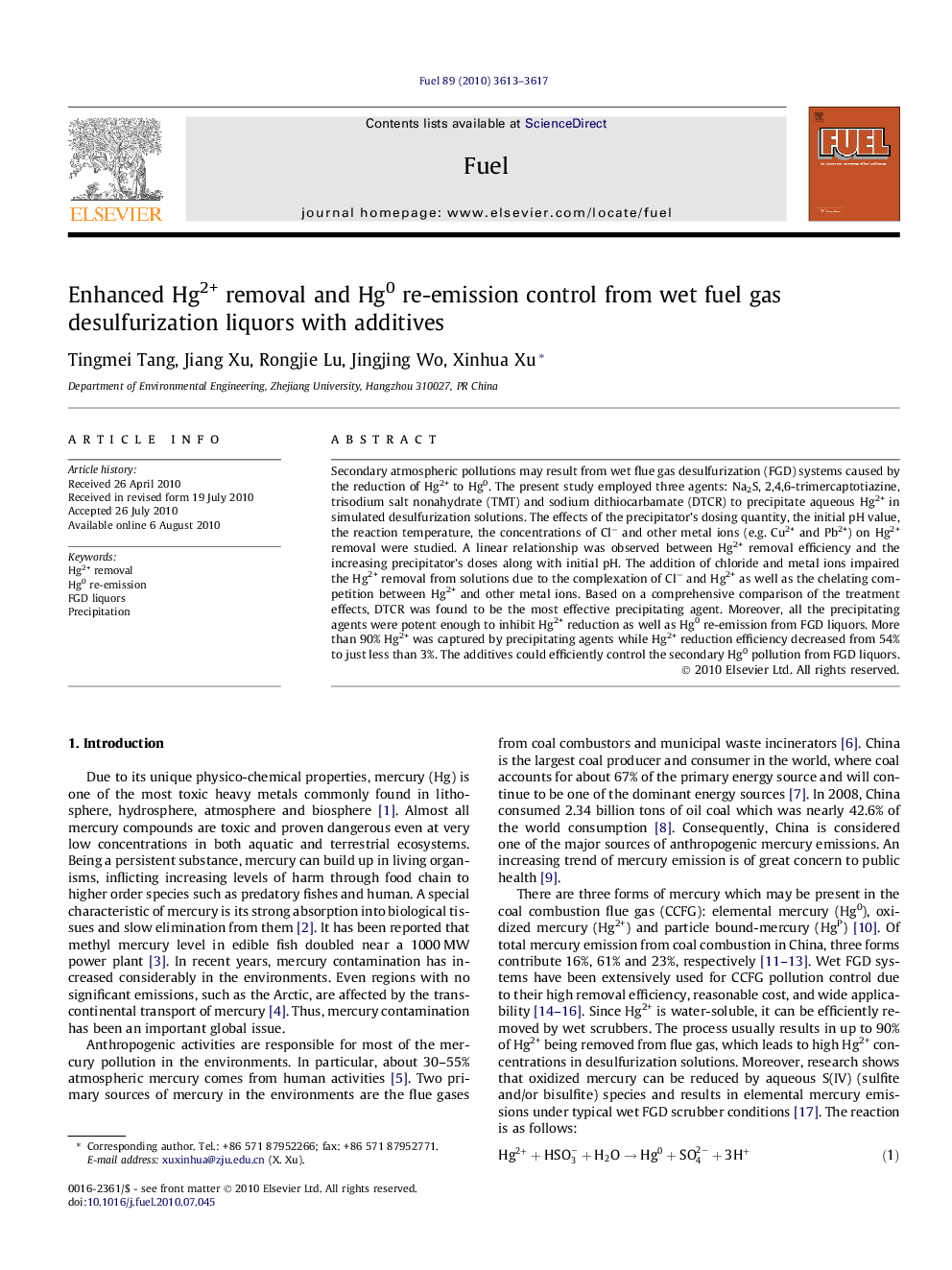| Article ID | Journal | Published Year | Pages | File Type |
|---|---|---|---|---|
| 206438 | Fuel | 2010 | 5 Pages |
Secondary atmospheric pollutions may result from wet flue gas desulfurization (FGD) systems caused by the reduction of Hg2+ to Hg0. The present study employed three agents: Na2S, 2,4,6-trimercaptotiazine, trisodium salt nonahydrate (TMT) and sodium dithiocarbamate (DTCR) to precipitate aqueous Hg2+ in simulated desulfurization solutions. The effects of the precipitator’s dosing quantity, the initial pH value, the reaction temperature, the concentrations of Cl− and other metal ions (e.g. Cu2+ and Pb2+) on Hg2+ removal were studied. A linear relationship was observed between Hg2+ removal efficiency and the increasing precipitator’s doses along with initial pH. The addition of chloride and metal ions impaired the Hg2+ removal from solutions due to the complexation of Cl− and Hg2+ as well as the chelating competition between Hg2+ and other metal ions. Based on a comprehensive comparison of the treatment effects, DTCR was found to be the most effective precipitating agent. Moreover, all the precipitating agents were potent enough to inhibit Hg2+ reduction as well as Hg0 re-emission from FGD liquors. More than 90% Hg2+ was captured by precipitating agents while Hg2+ reduction efficiency decreased from 54% to just less than 3%. The additives could efficiently control the secondary Hg0 pollution from FGD liquors.
